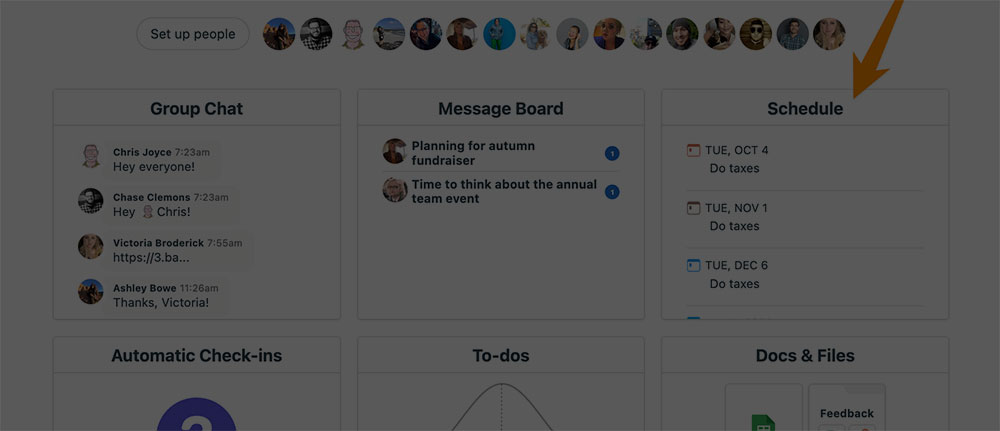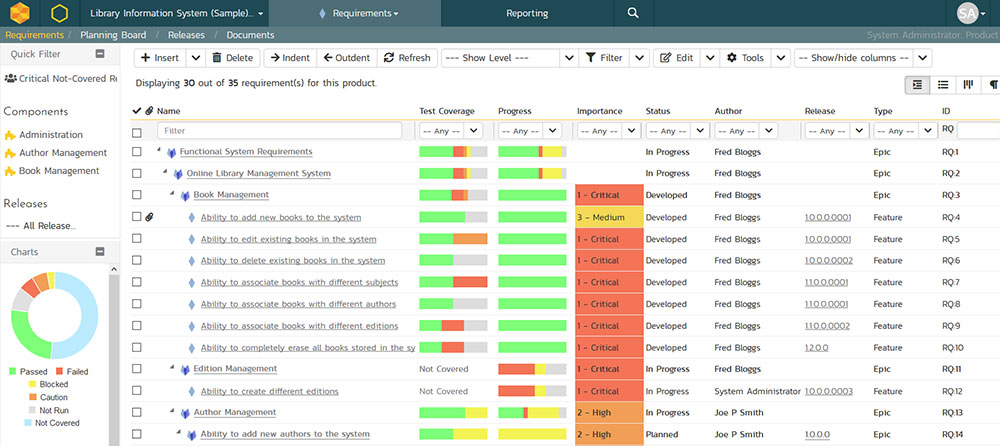Picture this: You’ve nailed the plan, the team’s revved up, and the project’s green-lit. Smooth sailing ahead, right? Well, here’s the twist—staying on course demands more than a stellar launch; it’s the vigilant monitoring in project management that’ll see you through to success.
Diving into this uncharted territory requires a deft hand on the tiller, steering through project metrics and performance measurements.
Imagine coming out on the other side, project shining bright, team high-fiving, and stakeholders all smiles. That’s not just wishful thinking—it’s the destination this guide promises.
Here, in the vibrant overlap of rigorous control processes and dynamic task scheduling, lies the crux of your journey.
By the final words of our exploration, you’ll co-opt the art of risk management, translate quality assurance into action, and decode the enigma of earned value management.
Lock in. We’re charting a route through the essentials: harnessing real-time analysis, leveraging collaboration tools, and mastering change management. Ready to transform how you view the lifeline of your projects? Let’s venture forth.
Key takeaways
- Monitoring involves routinely assessing and tracking project activities and progress against plans and goals, ensuring the project remains on schedule.
- It’s crucial for keeping projects on track, within budget, and aligned with their goals, allowing for early detection of issues and corrective actions.
- A proper monitoring system includes a timetable, defined performance indicators, assigned responsibilities, and evaluation and reporting of project data.
- Techniques used in monitoring include progress reporting, variance analysis, earned value management, critical path analysis, and risk management, each providing insights for potential corrective actions.
Main Benefits and Status Goals
A myriad of project changes can diminish your monitoring in project management efforts. Yet, the project’s success level rests on monitoring and controlling. That means that project planning has a very limited range of appliances. Afterward, it is all about boosting project performance.
Here are a few ways to accomplish that:
- Learning from past mistakes is key for conducting evaluations
- Regularly update the resource plan
- Acknowledge all important milestones and inform the beneficiaries
- Focus on project monitoring and control during each project stage
- Refrain from expanding the project scope
- Ensure all departments remain on the same page regarding the project’s execution
- Rely on flexible policies to improve the status reports
- Consider making project changes for better resource management
Project monitoring tools are an essential part. Pinpointing the current status can get tricky, and managers often need to dig deeper. Yet, continuous monitoring produces all of the project-related details. This allows managers to change courses if needed.
The project lifecycle can morph and divert from the expected result. Therefore, you should always aim to submit the project deliverables on time. To do so, frequently compare the project progress with the planning phase.
A Step-by-Step Guide for Accurate Monitoring
To improve performance across the board, start by crafting an actionable plan. Orient on these fundamentals for optimal monitoring in the project management process:
Organize the Entire Workflow
This is a complex task that favors multiple approaches at once. For instance:
- Envision your path to success. Take the time to chisel the optimal chain of events. Next, work on clearing all obstacles that might appear along the way. The project manager should utilize several methods to ensure success on those points.
- Shortlist your action plan. Putting the project plan on a piece of paper will allow you to develop a method.
- Estimate the duration of each task. Set up a timeline of the chain of actions. Note how much time you’ll likely need for a given task.
Assign the Right Role to Each Team Member
Make the most experienced members responsible for the daily monitoring tasks. That way, you’ll have a healthy stream of fresh details and evaluations.
Resolve Roadblocks and Bottlenecks ASAP
Many of the later parts of a project will comprise dependent tasks. So, you won’t be able to begin those phases until you completely wrap up the predecessor activities. However, unforeseen hardships may prevent you from moving on as soon as expected.
To avoid idle time, it’s best to identify such threats and get the whole team on board. Next, organize a quick action plan and resolve the blockages. Otherwise, the work will stall, and it might lead to failure.
Set the Key Goals of the Project
When assessing your current results, focus on the essentials. Here’s how to know where to look:
- Settle on the type of data the stakeholders are expecting from you
- Avoid wasting time assessing irrelevant aspects
- Develop a system for gauging the common pain points
- Reserve enough space and time for evaluating your work
- Motivate the whole team to reach new milestones
Track Your Team’s Daily Efforts
Some team members may perform better than the rest. Consider putting them in a higher position and make an example of their dedication levels. At the same time, you’ll save resources by assigning the tougher tasks to the right people.
To assert which members are doing better, collect everyday monitoring data. This will also give you an overview of the overall network activity.
Produce Effective Fiscal Reports
Your stakeholders will demand varying levels of in-depth reports. Thus, you’ll have to use modern tools to craft neat and intuitive reports.
Even when using PowerPoint, the receiver should quickly get an idea of the company’s growth. If possible, opt for video materials depicting the team’s work ethics as well.
Upkeep an Evolving Project Status
Your team should work in unison to achieve a smooth workflow. That means they should have clear roles and know when and how to pitch in.
As a result, there shouldn’t be any room for internal bickering and arguments. Instead, they should focus on crossing each item on the objectives list.
Implement and Record New Changes
Any past project can teach you how to evolve and upgrade your systems. Thus, when planning out your current project, look back at what worked in the past. Especially inspect why certain roadblocks appeared. Then, try to set even stronger foundations.
After making such a change, make sure to record your new input. This will allow you to track how the workflow improved due to it clearly. It will also come in handy if you want to revert to the previous chain of actions.
Are you looking for a great project management app?
Here are our recommendations:
Actionable Tips and Tricks
Acquire Proper Equipment
Effective monitoring in project management depends on the toolset. Modern project management software can grant you a detailed peek into the workflow. For example, new task management tools produce real-time data you can easily evaluate.
Staying on top of things is the only way never to miss a deadline. To that end, ensure that all members use proper team comms channels often. You don’t want anything flying under the radar and setting you behind schedule.
Instruct All Team Members to Be as Vocal as They Can
Sweeping problems under the rug is never a good sign. Instead, it’s a much better practice to stay in the loop on all developments.
Therefore, set up a pace of weekly team-building activities and check-ups. At such events, all members should provide a progress update. This is the preferred way of performing monitoring in project management.
Monitoring in Project Management – Practical Techniques
- Stick to the classic Critical Path Method to enforce a clear set of goals
- Never venture outside of the budget limits
- Aim for real-time risk assessment and management. To that end, expect frequent status reports from all departments
The main goal of project monitoring is to spot optimization openings. So, use the monitoring data to evaluate the slowdowns and figure out how to solve them next time. As a result, you’ll be able to intervene in one of these ways:
- Alter some approaches in both qualitative and quantitative sense
- Derive special processes for certain project types
- Support a current effort from various external angles
Project monitoring is a helpful method for ensuring success at all stages. It spreads across the whole project timeline and includes all project requirements. In that way, it helps you stay within budget and enforce a quality standard.
FAQ On Monitoring In Project Management
What exactly is monitoring in project management?
Oh, it’s the heartbeat of the project, you know? Keeping tabs on everything from your project metrics to progress reporting. Consider it your very own command center, where real-time analysis ensures we stick to the plan, or pivot when necessary.
How does monitoring differ from controlling in project management?
Monitoring is like the project’s pulse check; it’s all about observing and tracking. Meanwhile, controlling? That’s your move—the adjustments and decisions you make based on what the monitoring tells you. Two sides of the same coin, both crucial.
Why is monitoring critical to project success?
Without it, you’re flying blind! Monitoring gives you that essential visibility into how your project’s performing. It’s the difference between guessing and knowing—whether you’re on track or if alarms should be ringing.
What tools are used for monitoring projects?
Think digital toolbelt: You’ve got your PM software, Gantt charts, dashboards—all that tech jazz. These tools are lifesavers, keeping everything from your schedule adherence to budget tracking in crystal-clear view.
Can you monitor without proper planning?
Monitoring without planning? That’s like sailing a ship without a map! Sure, you’ll float, but will you reach your destination? Doubtful. Plan first; monitor second. It’s the recipe for smooth sailing.
What are some common challenges in project monitoring?
Ever tried juggling while riding a unicycle? That’s project monitoring sometimes. Unexpected hiccups like scope creep, miscommunication, even tech glitches—stuff hits the fan. It’s up to us to keep it all from spiraling.
How often should project monitoring occur?
Here’s the kicker—it’s not one-size-fits-all. Depends on the project’s size and complexity. Could be daily stand-ups for some or weekly deep-dives for others. Key is consistency; keep that rhythm going.
What role do KPIs play in project monitoring?
KPIs are your North Star, guiding the ship. They’re those number-based beacons that yank the abstract—project health—into the land of the concrete. Hit those targets, or find out why you’re missing them.
How should feedback be integrated into monitoring?
Feedback’s the secret sauce! It’s like fresh intel from the front lines—indispensable. Gather it, sift through it, and boom—use it to refine your tactics. A true game-changer.
What’s the future of project monitoring?
We’re talking high-tech horizon—AI, automation, advanced analytics. These will not only streamline but supercharge monitoring processes. Imagine predictive insights before risks even rear their ugly heads! The future’s bright; the future’s data-driven.
Conclusion
Navigating the choppy waters of monitoring in project management wraps up, and guess what? You’ve got the compass. Steering the ship past project shoals needs a firm grip on that wheel—tracking, measurement, and course correction are the tools.
Keep a keen eye. Your project’s pulse? Monitored. The climate ahead? Forecasts say clear skies and favorable winds, thanks to those trusty indicators and an unshakeable plan guiding you.
- Real-time adjustments?
- Team collaboration sky-high?
- Stakeholders all looped in?
That’s a confident nod for each one.
The journey’s as crucial as the destination—remember that. Checking the coordinates, marking progress with every milestone, that’s the stuff of legends. With this treasure trove of insights, charting the next course seems less daunting, more like second nature. Trust the process, seize the data, and land ashore with your project not just intact but triumphant.
Brace the helm, onward to new adventures.
If you liked this article about monitoring in project management, you should check out this article about project management for non project managers.
There are also similar articles discussing contingency planning in project management, project management lead time, scheduling techniques in project management, and forward pass in project management.
And let’s not forget about articles on gold plating in project management, operations management vs project management, project management OKRs, and primary and secondary stakeholders.
- Preventing Emails From Going To Spam In Gmail with GlockApps - April 25, 2024
- Key Technologies Shaping UX/UI in Web Portal Development - April 25, 2024
- Vue Component for Inline Text Editing: Enhancing Web Interfaces - April 25, 2024












